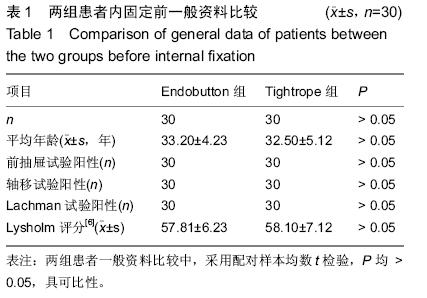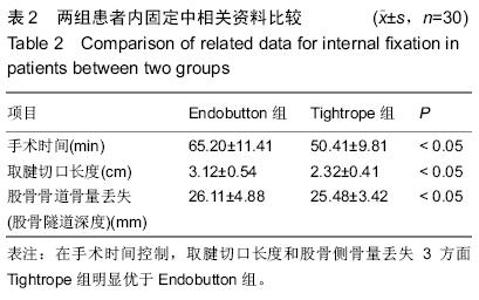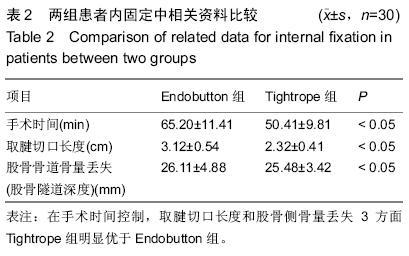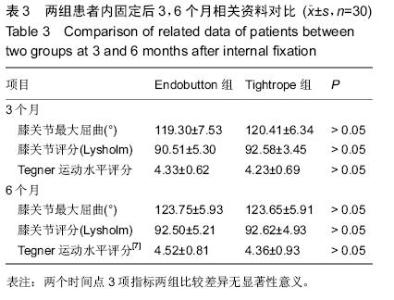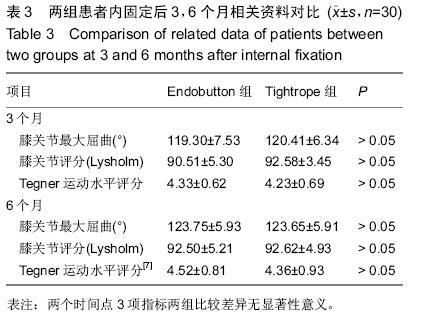| [1] Hoher J,Moller HD,Fu FH.Bone tunnel enlargement after anterior cruciate ligament reconstruction :fact or fiction ?Knee Surg Sports Traumatol Arthrosc. 1998; 6(4):231-240.[2] L’Insalata JC,Klatt B,Fu FH,et al.Tunnel expansion following ACL reconstruction a comparison of hamstring and patellar tendon autografts.Knee Surg Sports TraumatolArthrosc.1997;5(4):234-238.[3] Zavras TD,Race A,Amis AA.The effect of femoral attachment location on anterior cruciate ligament reconstruction:graft tension patterns and restoration of normal anterior- pos-terior laxity patterns.Knee Surg Sports Traumatol Arthrosc.2005; 13(2):92 -100.[4] Iorio R,Di Sanzo V,Vadal A,et al.ACL reconstruction with hamstrings:how different technique and fixation devices influence bone tunnel enlargement.Eur Rev Med Pharmacol Sci.2013;17(21):2956-2961.[5] Barber-Westin SD,Noyes FR.Objective criteria for return to athletics after anterior cruciate ligament reconstruction and subsequent reinjury rates:a systematic review.Phys Sportsmed.2011;39(3): 100-110. [6] Lysholm J,Gillquist J.Evaluation of knee ligament surgery results with special emphasis on use of a scoring scale.Am J Sports Med.1982;10(3):150-154.[7] Tegner Y,Lysholm J.Rating systems in the evaluation of knee ligament injuries.Clin Orthop Relat Res.1985; (198): 43-49.[8] Miyasa Ka,Daniel O,Stone M.The incidence of knee ligament injuries in the general population.Am J Knee Surg.1991;4:43-48.[9] Ley ST,Salmon,Waller A,et al.Clincal results and risk factors for reinjury 15years after anterior cruciate ligament reconstruction:a prospective study of hamstring and patellar tendon grafts.Am J Sports Med.2012;40(3):595-605.[10] Lohmander LS,Englund PM,DahI LL,et al.The long-tem consequence of anterior cruciate ligament and meniscus injuries:osteoarthritis.Am J sports Med.2007;35(10):1756-1769.[11] Baranoff J,Hanrahan SJ,Connor JP.The roles of acceptance and catastrophizing in rehabilitation following anterior cruciate ligament reconstruction. J Sci Med Sport.2014;4(13):1440.[12] Schreiber VM,Van Eck CF,et al.Anatomic double- bun-dle ACRReconstruction.Sports Med Arthrosc. 2010;18(1):27 -32.[13] Hammond KE,Dierckman BD,Potini VC,et al.Lateral femoral cortical breach during anterior cruciate ligament recon-struction:anbioechanical analysis. Arthoscopy.2012;28(3):365-371.[14] Studler U,White LM,Naraghi AM,et al.Anterior cruciate ligament reconstruction by using bioabsorbable femoral cross pins:MR imaging findings at follow-up and comparison with clinical findings.Radiology.2010; 255:108-116.[15] 涂俊,徐斌,徐洪港,等. Endobutton钢板及Rigidfix横穿钉固定自体腘绳肌肌腱重建前交叉韧带[J].中国组织工程与临床康复,2011,15(4):633-637.[16] 冯伟,许建中,辛若冰,等. 关节镜下联合应用Rigidfix、Endobutton和Intrafix系统固定腘绳肌腱重建前交叉韧带[J].中国组织工程研究与临床康复,2011,15(21): 3882- 3886.[17] Barrow AE, Pilia M, Guda T, et al.Femoral suspen sion Devices for Anterior cruciate ligament reconstruction: Do adjustable loops lengthen ? Am J Sports Med. 2014; 42(2):343-349.[18] Petre BM,Smith SD,Jansson KS,et al.Femoral Cortical Suspension Devices for Soft Tissue Anterior cruciate ligament reconstruction.Am J Sports Med.2013;41(2): 416-422. |

